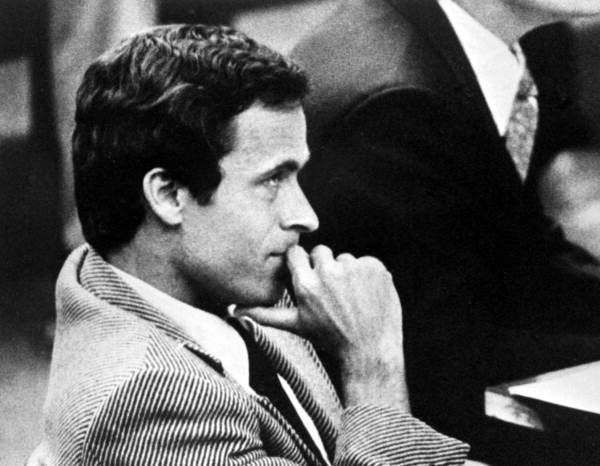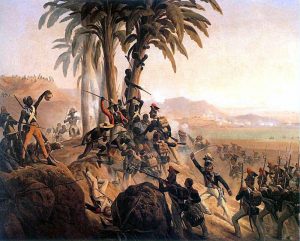Patrolman David Lee with the Pensacola Police Department was conducting his routine patrol in the early morning hours of February 15, 1978, when he just happened to cross paths with Theodore Bundy when he stopped him for a traffic violation. After a slight scuffle in which Bundy tried to flee, Lee managed to handcuff and secure him inside his vehicle. Bundy was quiet for most of the ride, and he knew his criminal adventures were finally over.1 After two successful escapes from jail, there was not going to be an opportunity for another.2
“I wish you had killed me.” He told Lee from the back of the car. “Would you kill me if I tried to run?”3
Before Bundy’s killing spree began, he attended the University of Washington, where he obtained a Bachelors degree and two years of law school.4 Based on the knowledge he gained in law school, Bundy insisted on being directly involved in conducting his defense in each of his trials, which is where his legal downward spiral began. During his sentencing trial, he attempted to connect with his jury and humanize himself by using carefully chosen Bible scripture. He wanted his largely southern jury to see him as comparable to Christ. He assured them that he was no Christ figure, but he urged them to remember how Christ had experienced an unjust trial and was subsequently executed on the basis of that unjust trial.5

As his final trial started to come to its inevitable end, Bundy did everything he could to postpone his execution date. He had multiple interviews with several different individuals; in each interview he would reveal something about himself that he would use to charm or manipulate his audience. One of these interviews led to an examination of evidence to see if Bundy was incompetent at the time of trial, which postponed his sentencing hearing. When a reporter questioned Bundy in an attempt to get him to admit to the thirty suspected murders, Bundy replied, “Put a zero after that.”6 Though we will never be certain on an exact number of murders that Bundy committed, it is without a doubt higher than the thirty that he officially confessed to.

Finally, on January 17, 1989, Bundy’s fourth and final death warrant was signed.7 It was at this point that he started confessing to multiple murders in an attempt to stave off his execution. After having been able to squeeze his way out of nearly every other situation he had managed to entangle himself in, he finally started to realize the inescapable reality, and the mask that he put on to keep the world from seeing him for what he really was, started to slip. He immediately began to look for his way out, trying to tug at the heartstrings of anyone who would listen. His last card to play was his interview with James Dobson.8

Dr. James Dobson is the founder of Focus on the Family, a Christian organization based in Colorado.9 At the time of Bundy’s interview, Dr. Dobson’s campaign was that pornography and violence were interrelated, and since Bundy was looking for a way to keep people talking about him, they were a match made in heaven. Throughout the interview, Dr. Dobson and Bundy were able to craft an entirely new story that thousands of people would believe. Bundy was able to portray himself as being corrupted by pornography from a young age, that pornography is what caused his violent behavior. Dr. Dobson had his perfect poster child. There was a question in the middle of the interview in which Dr. Dobson questioned Bundy about the murder of Kimberly Leach, and Bundy stated that he couldn’t talk about it.
“One of the final murders that you committed, … little Kimberly Leach, 12 years of age. I think the public outcry was greater there because an innocent child was taken from a playground. What did you feel after that? Was there normal emotions three days later? Where were you, Ted?” asked Dr. Dobson.

“I can’t really talk about that,” said Ted Bundy.
“That’s too painful,” Dr. Dobson interjected.
“I would like to be able to convey what that experience is like, but I can’t be able to talk about it,” said Ted Bundy.
“OK,” said Dr. Dobson.10
At this point, the camera caught Bundy’s quick glance at Dr. Dobson, clearly reading and carefully considering his next words. It was at this moment that Bundy’s eyes looked up at Dr. Dobson and in those few seconds his mask slipped, revealing the heartless murderer making his cold calculations on what his next move would be. The facade of the repented sinner that was corrupted by pornography that Bundy had been attempting to convey to us crumbled to reveal the truth, a psychopathic killer.

Throughout the entire forty-minute interview, he carefully chose his words in order to most effectively charm whatever audience he could manage to get his words to. This interview is where we get one of his most infamous quotes:
“And people need to recognize it’s not some kind of . . . those of us who are or who have been so much influenced by violence in the media, in particular, pornographic violence, are not some kind of inherent monsters. We are your sons and we are your husbands, and we grew up in regular families. And pornography can reach out and snatch a kid out of any house today. It snatched me out of my home 20, 30 years ago, and as dedicated as my parents were, and they were diligent in protecting their children and as good a Christian home as we had, and we had a wonderful Christian home, there is no protection against the kind of influences that are loose in society that tolerates. . . .”11
Ann Rule, a former co-worker and friend of Bundy, immediately recognized the interview for what it was: a final attempt to save himself, to blame someone other than himself for what he did.
“Dr. Dobson wanted someone to testify against booze and pornography, and Ted wanted to leave us all talking about him. He wanted to blame someone else for his crimes, and by saying it was us who left all those bad magazines on the racks, he became innocent in his own mind.”12

On January 24, 1989, Theodore Bundy died in the electric chair. As the white flag signaling his death was waved from the prison yard, cheers could be heard from the crowd gathered across the street. The chant “Burn, Bundy, burn!” paired with the banging of frying pans rang out in the early morning air.13
Dr. Dobson did not release the interview until after Bundy was executed. In a way, both of these men achieved their goal. Dr. Dobson had a real-life example of the dangers that pornography can have on a perfectly “normal human.” Bundy was able to keep people talking about him, his horrific murders, and what possible factors led him to commit those crimes. Several women viewed Dr. Dobson’s interview with Bundy and saw the compassion and remorse that Bundy was attempting to portray, while others were able to see through his last lie.14 Bundy went down in history for being one of the most cold blooded killers who will continue to be discussed for generations.
Though many people still protest Bundy’s execution, there is one thing we can all agree on: “He had an easier death than any of his victims.” 13
- George R. Dekle, The Last Murder: The Investigation, Prosecution, and Execution of Ted Bundy: The Investigation, Prosecution, and Execution of Ted Bundy (Santa Barbara, California: Praeger, 2011), 16. ↵
- Kristen Iversen, “When Death Came to Golden,” American Scholar 87, no. 2. (2018): 82. ↵
- George R. Dekle, The Last Murder: The Investigation, Prosecution, and Execution of Ted Bundy: The Investigation, Prosecution, and Execution of Ted Bundy (Santa Barbara, California: Praeger, 2011), 16. ↵
- George R. Dekle, The Last Murder: The Investigation, Prosecution, and Execution of Ted Bundy: The Investigation, Prosecution, and Execution of Ted Bundy (Santa Barbara, California: Praeger, 2011), 22. ↵
- George R. Dekle, The Last Murder: The Investigation, Prosecution, and Execution of Ted Bundy: The Investigation, Prosecution, and Execution of Ted Bundy (Santa Barbara, California: Praeger, 2011), 212. ↵
- George R. Dekle, The Last Murder: The Investigation, Prosecution, and Execution of Ted Bundy: The Investigation, Prosecution, and Execution of Ted Bundy (Santa Barbara, California: Praeger, 2011), 219. ↵
- George R. Dekle, The Last Murder: The Investigation, Prosecution, and Execution of Ted Bundy: The Investigation, Prosecution, and Execution of Ted Bundy (Santa Barbara, California: Praeger, 2011), 218. ↵
- Kristen Iversen, “When Death Came to Golden,” American Scholar 87, no. 2. (2018): 88. ↵
- Dr. James Dobson Steps Down as Focus on the Family Chairman (Colorado Springs, Colorado: Focus on the Family. February 27, 2009), https://www.focusonthefamily.com/about/newsroom/news-releases/20090227-dobson-steps-down-as-focus-chairman. ↵
- The Associated Press,”Bundy’s Last Interview; ‘I take full responsibility,'” The Palm Beach Post, January 29, 1989, 7-8. ↵
- The Associated Press,”Bundy’s Last Interview; ‘I take full responsibility,'” The Palm Beach Post, January 29, 1989, 7-8. ↵
- LAST BUNDY INTERVIEW CALLED `CON GAME,’ Salt Lake City, Utah: Deseret News. September 12, 1989. ↵
- Barry Bearak, “Bundy Electrocuted After Night of Weeping, Praying : 500 Cheer Death of Murderer,” Los Angeles Times, 24 Jan. 1989. ↵
- LAST BUNDY INTERVIEW CALLED `CON GAME,’ Salt Lake City, Utah: Deseret News. September 12, 1989. ↵
- Barry Bearak, “Bundy Electrocuted After Night of Weeping, Praying : 500 Cheer Death of Murderer,” Los Angeles Times, 24 Jan. 1989. ↵



125 comments
Leeza Cordova
With all of the coverage that the cases have been getting recently, this article descriptively explained what kind of mastermind Bundy actually was. He was very manipulative and was able to bamboozle alot of people to think that he was innocent when he was everything but that. It is crazy to think how many times he got himself out of situations, because if this was present day, he wouldve immediately been executed.
Tala Owens
Recently Ted Bundy has been talked about again. There is a documentary that just came out on Netflix about him and a new series coming soon. He really will be talked about for generations and it’s kind of awful since that’s something he really wanted was to be talked about and famous. But it can’t be helped since he is one of the most cold and cruel serial killers in history. I’m glad he was caught eventually but it is unfortunately that it took so long. This ‘last lie’ shows that Bundy is heartless. He tried manipulating anyone who would listen to save himself from a punishment that was truly inevitable.
Danniella Villarreal
Bundy was a terrible person who never wanted to take responsibility for his brutal actions. He wanted everyone else to know about him and how the world corrupted him but in reality, it was just his sick mind. This was a nice informative article. It is sad knowing one of his last kills was a 12-year-old girl who was taken from a playground. It is also horrific to know that he murdered more than 30 people.
Chelsea Alvarez
The case of Ted Bundy is so interesting to me, because it is unreal to think that an individual would be capable of killing so many women for such a long period of time before getting caught by the authorities. Before reading this article, I had no idea that he had gone to law school. It is so ironic that he used bible scripture during his trial to appeal to the jury after he committed such brutal acts. The pictures used throughout this article really pieced the entire story together.
Emily Velazquez
My friend recently brought this man up in one of our casual conversations and since I have been reading a lot of articles on this website, I typed in his name in the search and started reading articles on him. Up until that last interview, he really knew how to play his audience. As the article says, Ted Bundy was a charmer. He knew how to get people to like him and see his side of things and sometimes even make himself seem innocent. He wanted to get people to think he was the victim of pornography and that that is what made him the way he is.
Averie Mendez
This article actually shook me with the fact that the infamous Ted Bundy was incredibly intelligent, charismatic and calculating, and it was probably these aspects about himself that allowed him to avoid his arrest for as long as he did. You mentioned many of his attempts to humanize himself and make himself more appealing to his audiences, but reading it made me feel unsettled in a way; he was a wolf attempting to cover himself in sheepskin.
Mia Morales
Being a criminology major, I have always found criminals and murders slightly interesting and this article perfectly captivated why. This article showcases Bundy’s mens rea and use of manipulation in order to spark a reaction of sympathy from his audience. By including how many women began to feel any sort of compassion for this cold-blooded killer showcases how maniacal Bundy was.
Bianca-Rhae Jacquez
This article was able to analyze Ted Bundy as a serial killer and pick apart who he was trying to portray and how he became his own downfall. It is interesting to know that Bundy was able to suspend his own hearing because that shows just how charming people thought he was. The statement that everyone agrees that Ted Bundy had an easier death than any of his victims is bold yet true.
Krystal Rodriguez
This article shed a light on the deceiving ways of Ted Bundy. Its fascinating how someone can believe to be innocent to the point of believing his own lies. He has a way with words that can make you think he was a good person who went down a wrong path. In reality, he manipulated those around him to get the attention he craved for his ruthless murders.
Natalie Juarez
Thank you for incorporating the pictures that you did for this article. When I look at Bundy, my immediate thoughts are that he looks like a handsome, well-put man. I imagine this is what made him so effective in luring young women into vulnerable positions. It saddens me that the families of the victims never really found closure even after the interviews with Bundy.